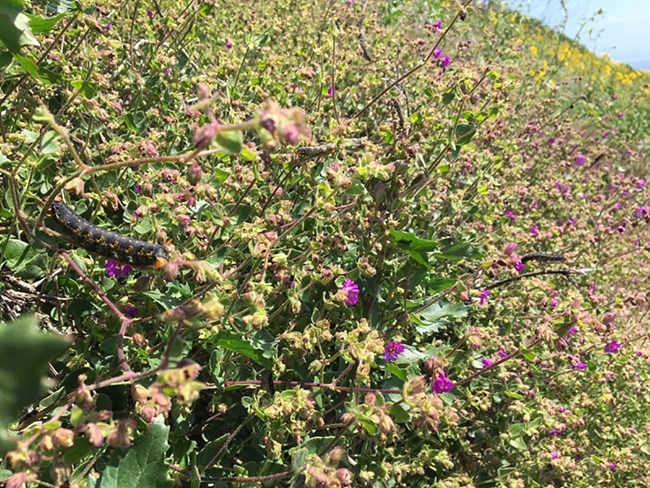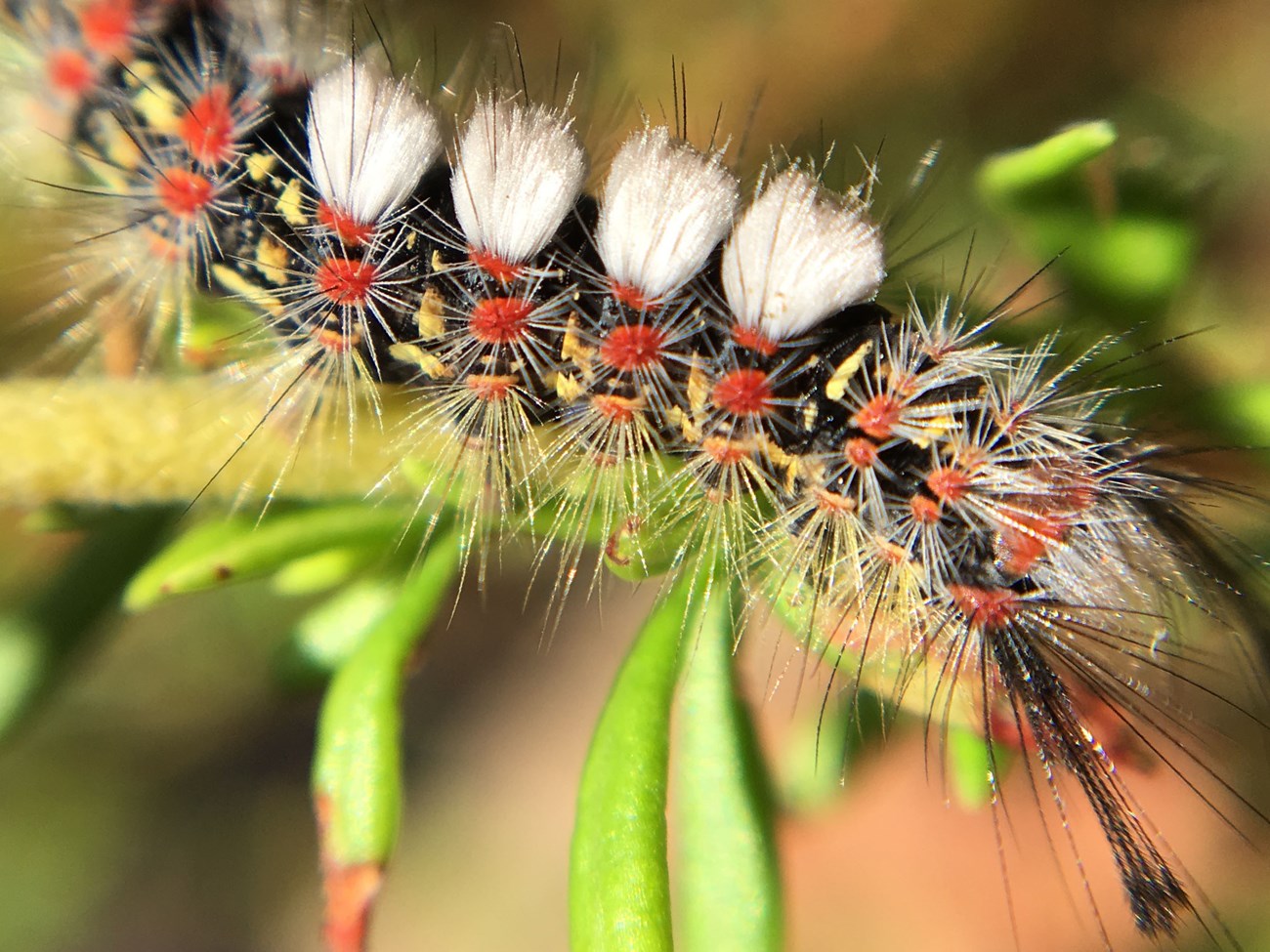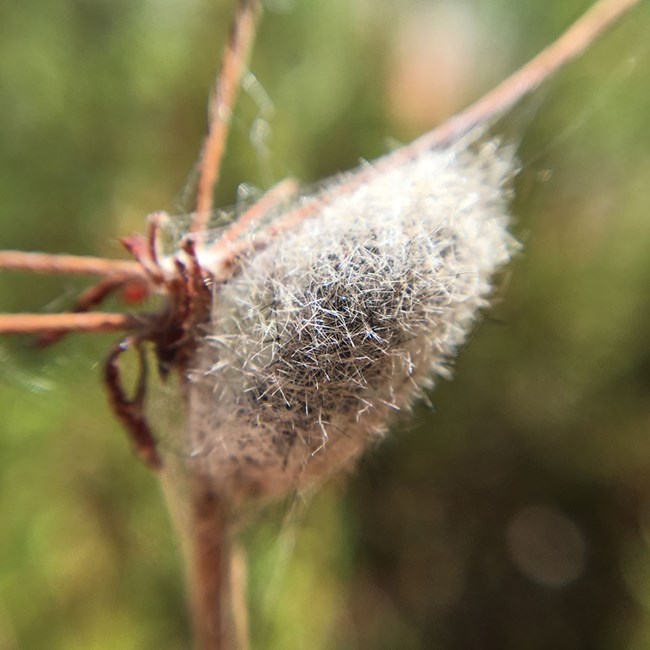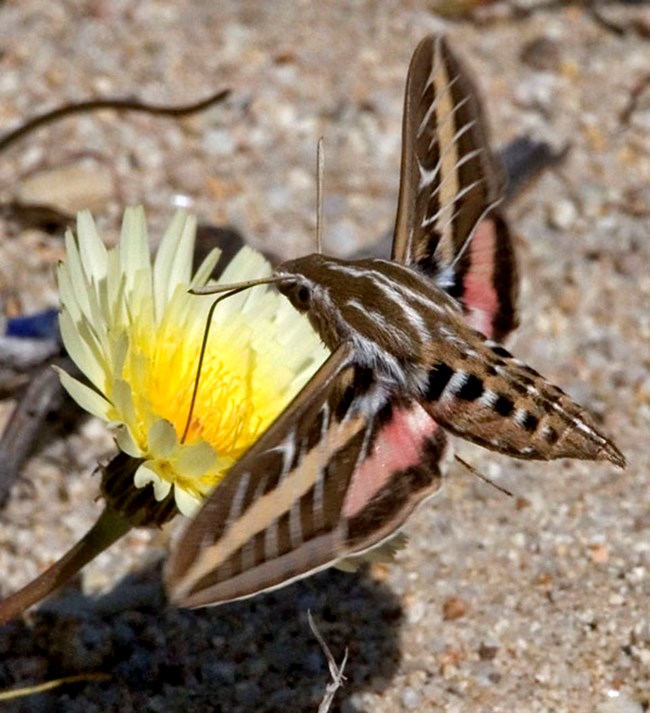Last updated: June 15, 2017
Article
Other Colors at Cabrillo National Monument

NPS / Andrew Rosales
June 2017 - Winter rains have brought color to Cabrillo National Monument in more ways than one. Most of all, monument staff have been noticing bright spots of orange and red moving among the amazing display of flowers. Some of the spots are covered in black and white fuzz and organized in a long series of rows. Other dark orange spots appear at either end of a smooth, black, orange-lined body.
Upon closer inspection, these bursts of color belong to two different kinds of caterpillars. Though stunning as caterpillars, both are destined to become not flashy butterflies, but mostly brown moths.
The fuzzy caterpillars are the larvae of the western tussock moth (Orgyia vetusta). They can also be recognized by the distinctive set of four white tufts, or tussocks, on their back. This is a native moth found across many of the Pacific States and often seen in the spring at Cabrillo National Monument. Though they appear soft, beware! Touching their protective, hair-like setae can irritate your skin.

NPS / Andrew Rosales
Tussock moth eggs begin to hatch in late February and the young larvae feed on the remaining egg mass. Then, to get out of each other's way and find more food, they spin a silk thread to “balloon” through the landscape. This ingenious strategy is also crucial because adult female tussock moths can’t fly. If their larval selves were similarly stuck, the species would be essentially immobile.

NPS / Andrew Rosales
Western tussock moth caterpillars become more recognizable during their second instar, or growth stage. Eventually, after feeding on a variety of vegetation, they spin a silk cocoon, also incorporating setae plucked from their own bodies. Adults emerge from mid-April to early May. Small brown males set off in search of the flightless females. The females wait on the cocoon they emerged from, releasing pheromones to advertise their locations. The females reuse the cocoon as a place to lay their eggs, which they cover with a new protective layer of secretions and setae. The eggs remain dormant for several months, until February rolls around once again.
The sleeker black and orange caterpillars at Cabrillo are the larvae of the white-lined sphinx moth (Hyles lineata). Elsewhere in their range, which spans much of North and Central America, their colors may be completely different. White-lined sphinx moth caterpillars are also called hornworms thanks to a more consistent trait: a distinctive horn protruding out of their back end. The horn on caterpillars in Cabrillo is typically bright orange.

NPS / Andrew Rosales

© Paul G Johnson (CC BY-NC 4.0)
Larvae will overwinter and emerge between February and November. They are voracious eaters and feed on a variety of plants. At Cabrillo, they seem to prefer the wishbone bush (Mirabilis laevis) along the Bayside Trail. The larvae then burrow into the soil to pupate. The pupae slowly wiggle back up close to the soil surface, and emerge as adults after 2-3 weeks.
Adult white-lined sphinx moths fly at dusk and feed on nectar, but may also fly during the day. They are sometimes called hummingbird moths because of their 2-3 inch wingspan and erratic flight patterns around flowers.
Don’t these spectacular caterpillars make you wonder what other colorful creatures might be hiding out there among the flowers?
NPS / Andrew Rosales
Prepared by the Mediterranean Coast Inventory and Monitoring Network.
